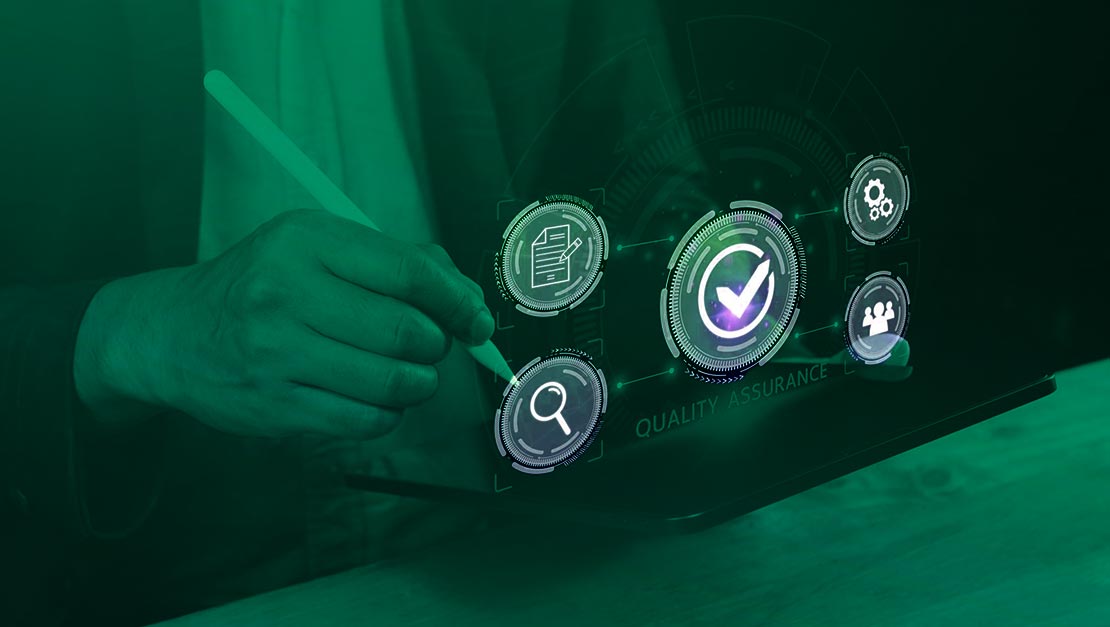Quality control (QC) is one of the most critical yet challenging aspects of manufacturing. Every organization knows that consistent quality is the foundation of trust, but traditional QC workflows often rely on outdated, manual systems that simply can’t keep pace with modern production demands.
Between paper checklists, delayed data entry, and fragmented reporting tools, even small oversights can cascade into costly recalls or compliance failures. The result is a process designed to ensure quality that often becomes the very bottleneck preventing it. That’s where aiOla’s voice agentic workflows are rewriting the rules. By enabling workers to document, analyze, and respond to quality issues with natural speech, aiOla brings real-time visibility, automation, and accuracy to every stage of the QC process.
This article explores why traditional quality control workflows are breaking down, how aiOla’s voice-enabled automation solves key challenges, the measurable business impact of adopting AI-driven QC, real-world applications across industries like automotive, aviation, and pharma, and how your organization can start using voice agentic workflows to drive quality at scale.
Why Do Traditional Quality Control Workflows Fail?
Manufacturing quality control has traditionally relied on manual processes designed for a slower, simpler era. But today’s production environments demand instant data, global collaboration, and zero margin for error. Manual workflows simply can’t deliver that compared to quality control automation.
Most organizations face similar challenges, such as:
Manual and Paper-Based Processes
Inspectors often rely on clipboards, forms, or spreadsheets to record findings, which are later re-entered into digital systems. This creates delays and increases the likelihood of human error. By the time a defect is documented, production may have already moved several steps ahead.
Fragmented Data and Communication Gaps
Each department, such as quality, maintenance, or production, often operates on its own system, making it difficult to connect insights across the workflow. As a result, potential issues remain siloed until they escalate.
Compliance and Traceability Risks
Audits require clear documentation of every inspection and corrective action. With manual or inconsistent records, proving compliance with ISO, FDA, or internal quality standards can be time-consuming and stressful. Additionally, the greatest challenge with manual records is that it makes real-time reporting and visibility impossible to accomplish.
Limited Real-Time Response
Traditional systems react to quality issues after they’ve already occurred. By the time managers review reports, defects may have multiplied across multiple product lines.
Workforce Challenges
Even the best teams are limited by the tools they use. Fatigue, language barriers, and repetitive administrative work all increase the risk of errors and slow productivity.
The reality is clear: manual QC processes are reactive, not proactive. And in an industry defined by speed and precision, that’s a serious disadvantage.
How Voice Agentic Workflows Revolutionize Quality Control
aiOla’s voice agentic workflows bring a completely new level of intelligence and responsiveness to the quality control process. Rather than requiring inspectors to pause their work to type or write, aiOla allows them to document issues, capture data, and trigger workflows simply by speaking naturally.
The result is a seamless, real-time connection between human expertise and automated data intelligence. Let’s take a deeper look:
Hands-Free, Real-Time Documentation
With aiOla, inspectors can log defects or record measurements verbally, even in loud environments like factories or hangars. The AI captures every detail, complete with timestamps, context, and industry-specific terminology, and structures it automatically within existing enterprise systems.
This eliminates the tedious back-and-forth between inspections and data entry, freeing workers to stay focused on what matters most: maintaining quality and safety.
Immediate Defect Response
Voice agentic workflows go beyond passive data capture. When a worker identifies an issue, aiOla can instantly trigger corrective actions, send alerts to supervisors, or update maintenance systems. Instead of waiting for end-of-shift reporting, organizations can act within seconds of detection.
Structured, Searchable Data
Quality data is only valuable if it’s usable. aiOla automatically structures spoken inputs into standardized formats, enabling instant analytics and reporting. That means you can identify trends, track recurring defects, and evaluate supplier performance without sifting through piles of paperwork.
Multilingual and Context-Aware
aiOla’s voice AI is trained in over 120 languages and can understand diverse accents, dialects, and industry jargon. Whether your team works in automotive, aviation, or food production, aiOla ensures consistent, accurate reporting, no translation or retraining needed.
Predictive and Preventive Insights
Once data is structured, aiOla applies machine learning to spot early signs of risk. Patterns that would take humans weeks to identify, like recurring issues on a specific line or batch, become instantly visible, helping prevent problems before they disrupt operations.
Together, these capabilities transform QC from a manual, error-prone process into an intelligent, self-improving system.
Measurable Business Impact
When manufacturers integrate aiOla into their quality control workflows, they see improvements across every major performance area:
Higher Efficiency
By automating documentation, aiOla can reduce inspection and reporting time. Workers spend less time typing or recording and more time actually improving quality outcomes.
Greater Accuracy
Because aiOla understands domain-specific speech and captures information in real time, the likelihood of missed or incomplete data drops dramatically.
Reduced Costs
Fewer reworks, less waste, and faster response times translate directly into cost savings. Over time, aiOla helps manufacturers reduce operational overhead while maintaining higher output quality.
Enhanced Safety
Hands-free interaction means workers never have to split focus between inspecting and documenting. This is especially valuable in high-risk environments like aircraft maintenance or automotive assembly.
Continuous Compliance
With every inspection logged digitally and traceable in real time, compliance reporting becomes simple. Audit trails are automatically maintained, reducing risk and administrative effort.
To sum it up, transforming manual processes into voice-led automation results in greater business value, increased uptime, improved data availability and accuracy, faster process completion, and ultimately, greater profitability.
Real-World Applications of Voice Agentic Workflows
Voice agentic workflows are already redefining how leading industries approach quality control. Here’s how different sectors are using aiOla to elevate precision and performance:
Automotive
Automotive production demands exacting precision and fast decision-making. aiOla allows inspectors to verbally log torque checks, assembly verifications, or defect reports without interrupting the line. The result is real-time oversight, fewer missed defects, and smoother coordination between teams.
Aviation
In aviation, safety and documentation go hand in hand. Maintenance, repair, and overhaul (MRO) teams use aiOla to capture findings in noisy environments, eliminating errors caused by missed notes or transcription mistakes. aiOla’s ability to recognize aviation terminology ensures every report is accurate and audit-ready.
Grocery & CPG
In grocery and consumer packaged goods (CPG), aiOla supports hygiene checks, temperature logging, and packaging verification. Operators can speak their observations while working, ensuring compliance without disrupting production flow.
Pharmaceuticals
Voice agentic workflows make compliance effortless for pharmaceutical manufacturers. aiOla enables teams to document every step of a production or testing process with precision, ensuring data integrity and full traceability for audits.
In each case, aiOla empowers teams to operate with the speed and precision of automation, without sacrificing the human insight that drives true quality.
Closing Thoughts on Quality Control Workflows
Quality control is no longer just about inspection; it’s about integration. The future belongs to workflows that connect people, data, and automation in real time.
aiOla’s voice agentic technology bridges that gap. It allows frontline teams to interact with systems naturally, capturing every observation as structured data while AI interprets and acts on it. The result is an organization where quality isn’t checked at the end of production; it’s ensured at every step.
By rethinking QC as a voice-first, AI-powered process, companies can not only prevent defects but also unlock new levels of efficiency, consistency, and operational insight.
Ready to see how aiOla can transform your quality control workflows? Book a demo today to experience how voice agentic automation can revolutionize inspections, reporting, and compliance for your business.







